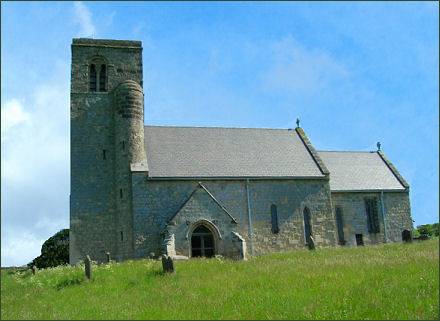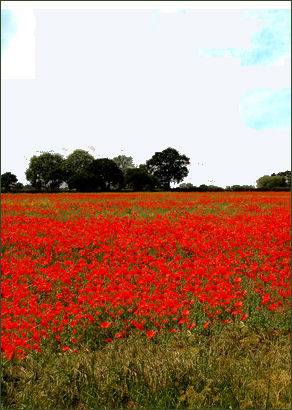Weaverthorpe
OS grid reference:-SE 965 708
 The small Yorkshire Wolds village of Weaverthorpe lies 13 miles to the south west of the popular seaside resort of Scarborough.
The small Yorkshire Wolds village of Weaverthorpe lies 13 miles to the south west of the popular seaside resort of Scarborough.
A village has occupied the site since the period of Norse settlement in the area. Weaverthorpe's name is derived from the Norse personal name, Vidhfari, anglicized to Wivar. Bronze Age settlements have been discovered at nearby Cowlam. Weaverthorpe is referred to in the Domesday Book of 1086 as Wiveretorp.
Following the Norman conquest the village was held by the Archbishop of York under Michael FitzHerbert. In the twelfth century the church of St. Andrew was granted to Nostell Priory until 1268. Lucy, daughter of Piers FitzHerbert, married Sir William de Ros of Helmsley-in-Holderness who acquired the manor of 'Wyverthorp'. In around 1271 the manor was acquired by William de Brewes, Baron Braose of Gower, on his marriage with Mary de Ros.
 The Gypsey Race beck runs through the main street. The village has a post office, a village store, primary school, and two pubs, The Star Country Inn and The Bluebell Inn. The latter is noted for its excellent food and offers accommodation. In the centre of the village is a small Methodist Chapel which once served as the Sunday School Room.
The Gypsey Race beck runs through the main street. The village has a post office, a village store, primary school, and two pubs, The Star Country Inn and The Bluebell Inn. The latter is noted for its excellent food and offers accommodation. In the centre of the village is a small Methodist Chapel which once served as the Sunday School Room.
The grey stone village church of St. Andrew (pictured left) sits up on the hillside looking down on the Village below. Reached down an avenue of yew trees from the lych gate, it is surrounded by a large graveyard managed as a conservation area with wild flowers and butterflies. The tower is believed to be a mix of late Saxon and Norman construction, it is a curious structure from which the interior staircase bulges.
Near the south porch is an eroded fourteenth century effigy, believed to have been brought here from either Bridlington or Nostel Priory after the Dissolution of the Monasteries. The interior of the building contains a curved and painted roof. The chancel is separated from the nave by a Norman arch. The font is probably Norman.
Above the south door of the nave is a sun-dial, with a part-illegible fragment of an inscription in Saxon characters, claimed as reading: " In honore Sancti andre - Herbert W.... Hoc Monasterium ". It has been claimed as a memorial to Herbert de Winchester (died 1120/1130) who built the church. Herbert of Winchester was chamberlain to King Henry I. His son William FitzHerbert was granted by King John, the lands of "Launsborough, Collerthorpe, Wyderthorpe, Holperthorpe and the two Lottum" . The unexplained reference to "ecclesiam de Clera[m]" in the charter of King Stephen relating to "Wiverthorpe", might refer to a chapel attached to a local manor house.
Herbert also had a manor to the east of the church, now an extension to the graveyard. This was excavated in the early 1960s by a local archaeologist, T C M Brewster. To the south of the church are mounds which are all that remains of a later manor of which little is known.
Towns and Villages of Yorkshire
